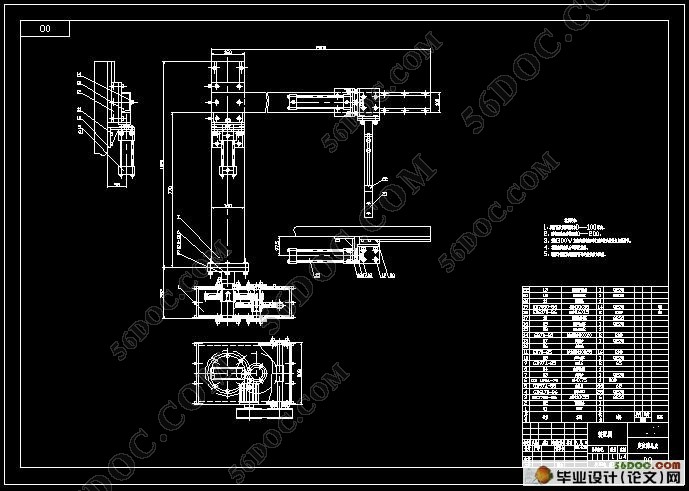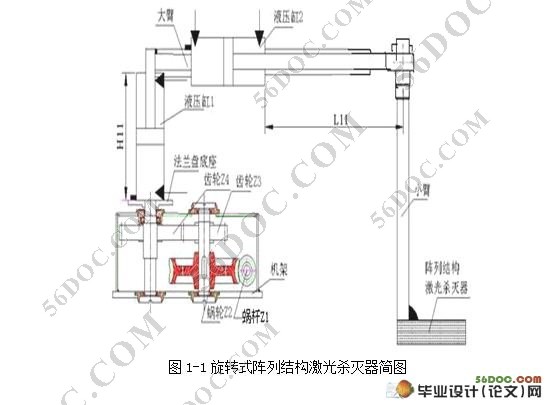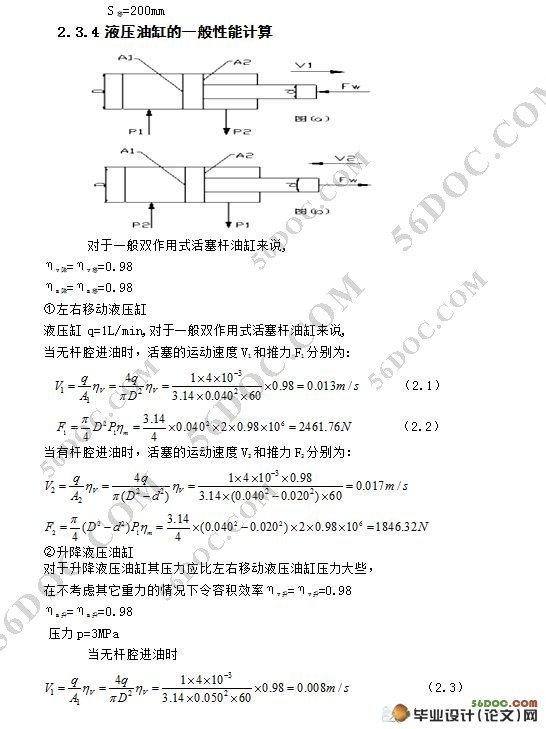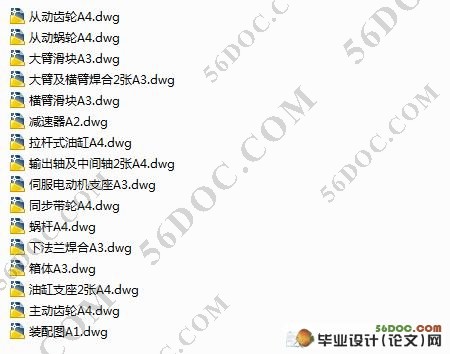(农业机械)旋转式阵列结构激光杀灭器设计
无需注册登录,支付后按照提示操作即可获取该资料.
(农业机械)旋转式阵列结构激光杀灭器设计(7800字)
摘要
关键字 旋转结构,AutoCAD,减速器,液压装置。
本课题是为农业激光杀虫作业而设计的自动扫描机械。它能方面地在田间按照我们所设计的动作快速高效地作业,对减轻劳动人民的劳动强度,改善劳动条件,提高劳动生产率和自动化水平,实现生产自动化发展有着重要作用。本课题通过应用AutoCAD 技术对其进行结构设计和液压传动原理设计,使其能将基本的结构更具体的展现在人们面前。它能实行左右移动,上下升降及360度旋转。
Scanning laser display structure designed to kill
Abstract
This issue is for agricultural pesticides laser operation designed to automatically scan machine. It easily in the field designed in accordance with the action we have to work quickly and efficiently, to reduce the labor intensity of the working people to improve working conditions and raise the level of labor productivity and automation, production automation plays an important role in development. Issues through the application of this technology for its AutoCAD design and structural design of hydraulic principle to the basic structure can be more specific in people before the show. Implement it about moving up and down movements and 360-degree rotation.





#p#副标题#e#
目 录
1 绪论 1
1.1旋转式阵列结构激光杀灭器设计目的 1
1.2本课题的内容和要求 1
1.2.1 原始数据 1
1.2.2 设计要求 1
1.3旋转式阵列结构激光杀灭器简图 2
2 液压油缸的设计 3
2.1 油泵 3
2.1.1 油泵的选用 3
2.1.2 油泵选用型号 3
2.2 液压油选用 4
2.3 液压油缸选用 4
2.3.1 液压油缸类型选择 4
2.3.2 安装方式 4
2.3.3 液压油缸的主要参数 4
2.3.4 液压油缸的一般性能计算 5
2.3.5液压缸壁厚度计算 6
2.4活塞杆稳定性验算 7
2.5活塞杆最大容许行程 8
2.6缸底厚度计算 9
2.7 缸筒与缸底连接计算 9
2.8活塞与活塞杆的连接 10
2.9缸体材料的选用及要求 11
2.10活塞 12
2.11活塞杆 12
2.12缸体端部和安装联结部分 12
2.13选择液压辅助元件 12
2.14液压系统原理图 13
3 回转体设计 14
3.1电动机的选用 14
3.2蜗轮蜗杆 14
3.2.1蜗轮蜗杆传动特点 14
3.2.2圆柱蜗轮蜗杆参数(GB 10085-88) 14
3.2.3圆柱蜗杆蜗轮传动的几何计算 15
3.2.4圆柱蜗杆传动的受力分析 16
3.2.5圆柱传动强度计算和刚度验算 16
3.2.6圆柱蜗杆传动滑动速度计算和传动效率估算 17
3.2.7圆柱蜗杆传动精度(GB 10089-88) 17
3.3直齿圆柱齿轮 18
3.3.1 直齿圆柱齿轮特点 18
3.3.2 直齿圆柱齿轮各部分名称及符号 18
3.3.3渐开线标准直齿圆柱齿轮的基本参数及几何尺寸计算 18
3.3.4轮齿受力分析和计算载荷 19
3.4轴的设计及计算............................................. 23
3.4.1轴的最小尺寸的初步确定................................ 23
3.4.2轴承的选择............................................ 24
3.4.3轴的强度校核.......................................... 24
4 总结........................................................27
参考文献 28
致谢 29
